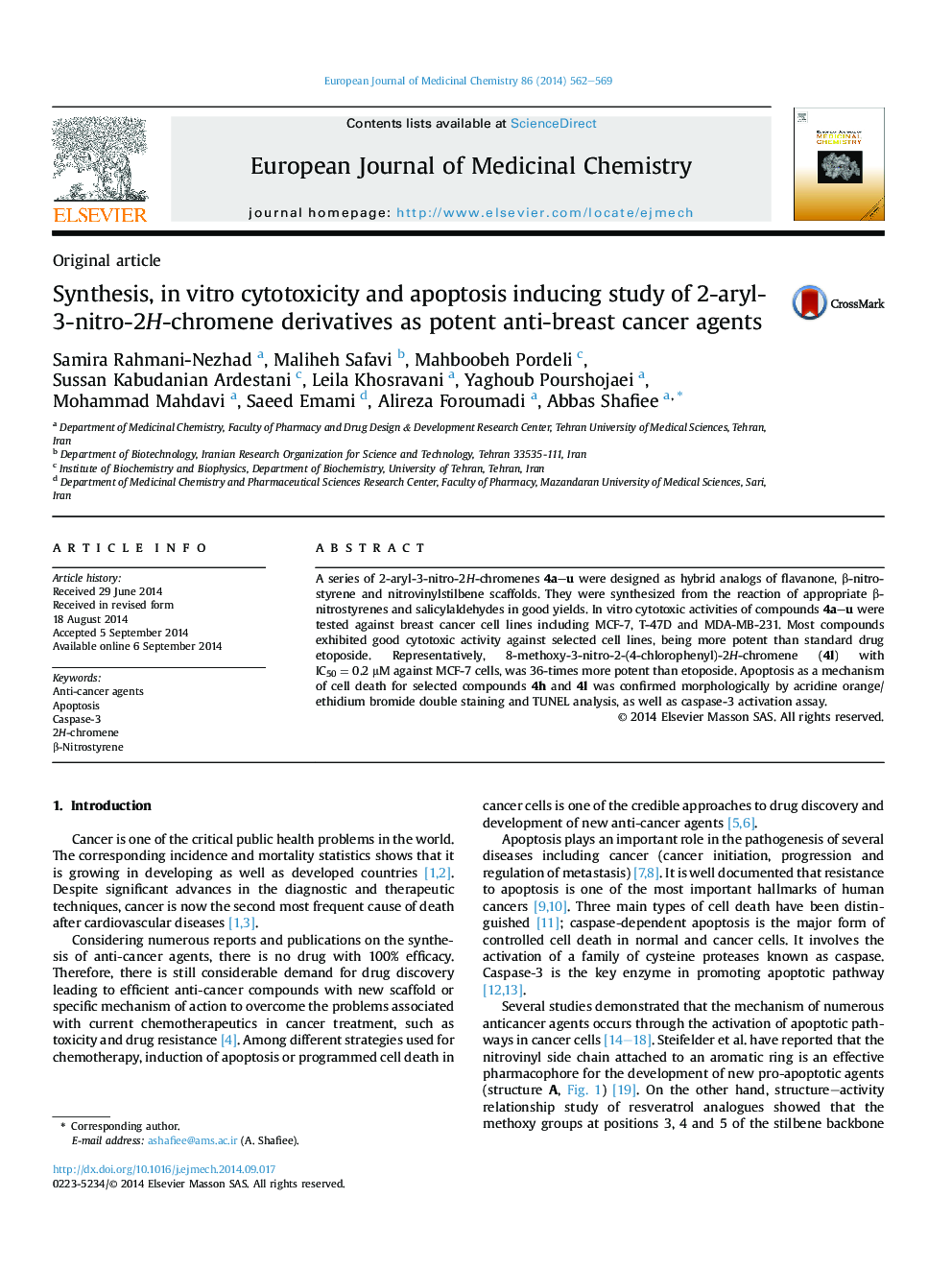| Article ID | Journal | Published Year | Pages | File Type |
|---|---|---|---|---|
| 1398872 | European Journal of Medicinal Chemistry | 2014 | 8 Pages |
•Compounds 4a–u were designed as new cytotoxic and apoptosis inducing agents.•Compounds 4a–u were synthesized from β-nitrostyrenes and salicylaldehydes.•The cytotoxicity of compounds 4a–u was tested against breast cancer cell lines.•Most of the tested compounds were more potent than standard drug etoposide.•Selected compounds 4h and 4l induce apoptosis via the activation of caspase-3.
A series of 2-aryl-3-nitro-2H-chromenes 4a–u were designed as hybrid analogs of flavanone, β-nitrostyrene and nitrovinylstilbene scaffolds. They were synthesized from the reaction of appropriate β-nitrostyrenes and salicylaldehydes in good yields. In vitro cytotoxic activities of compounds 4a–u were tested against breast cancer cell lines including MCF-7, T-47D and MDA-MB-231. Most compounds exhibited good cytotoxic activity against selected cell lines, being more potent than standard drug etoposide. Representatively, 8-methoxy-3-nitro-2-(4-chlorophenyl)-2H-chromene (4l) with IC50 = 0.2 μM against MCF-7 cells, was 36-times more potent than etoposide. Apoptosis as a mechanism of cell death for selected compounds 4h and 4l was confirmed morphologically by acridine orange/ethidium bromide double staining and TUNEL analysis, as well as caspase-3 activation assay.
Graphical abstractA series of 2-aryl-3-nitro-2H-chromenes 4a–u were designed and synthesized as hybrid analogs of β-nitrostyrene, nitrovinylstilbene and flavanone scaffolds with apoptosis-inducing cytotoxic activity against breast cancer cells.Figure optionsDownload full-size imageDownload as PowerPoint slide
